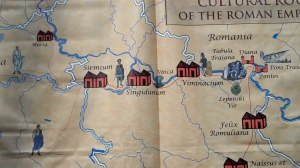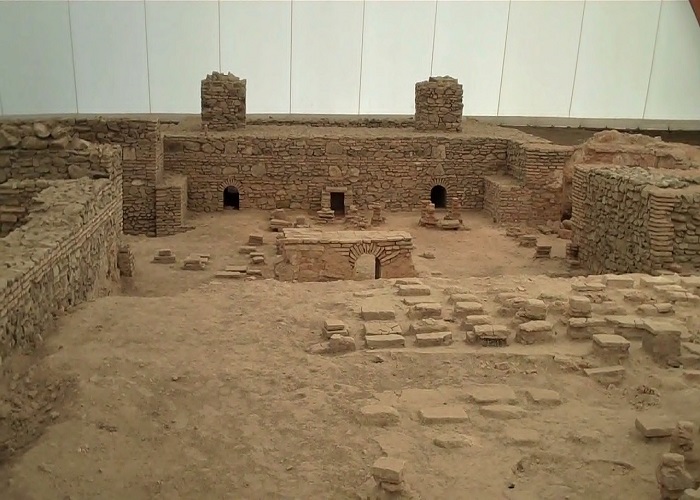I was sat right at the top, in the Royal Opera House it would have been seat Y51 – very high up with a restricted view. Looking down and behind the half naked archaeologist who was unmoved by the burning sun I could almost see Russell Crowe fighting ferociously for his freedom. Behind me was a flat green field with occasional glimpses of the Danube river, on whose bed was preserved this rich archaeological site.
“We are standing at the top of the amphitheatre with a capacity of 12,000 seats” the voice of the enthusiastic guide woke me up.
We are at Viminacium, one of many Roman towns and fortress in Serbia, not far from the capital city Belgrade. It covers a huge area and some of it is still undiscovered due to the presence of the nearby power plant which produces 20% of Serbia’s energy. The government is trying to buy land still owned by the local people to stop the theft of artefacts that are uncovered after heavy rain.
Large numbers of lamps, bricks, paving tiles, rings and coins have been uncovered and exhibited either at the Museum in Pozarevac or the Museum in Belgrade. The Viminacium complex is building their own museum too at the moment.
 The site has beautiful tombs decorated with frescoes whose colour was still bright and with mixed pagan and Christian symbolism. Tomb G5517 has a Christogram in a double floral garland and this is known as a Constantine Cross, after the first Roman Emperor to convert to Christianity. Tomb G2624 has animals and flowers and is clearly pagan, thus proving that Christians and Pagans were sometimes buried in the same cemetery.
The site has beautiful tombs decorated with frescoes whose colour was still bright and with mixed pagan and Christian symbolism. Tomb G5517 has a Christogram in a double floral garland and this is known as a Constantine Cross, after the first Roman Emperor to convert to Christianity. Tomb G2624 has animals and flowers and is clearly pagan, thus proving that Christians and Pagans were sometimes buried in the same cemetery.
Serbia has the largest number of Roman emperors born outside of Italy – 17 altogether, among them Constantine I and Justinian I.The tourist board has put together a project to combine visits to all the major Roman excavations on Serbian soil, called Itinerarium Romanum Serbiae. It will incorporate Sirmium, today known as Sremska Mitrovica, Singindunum which is Belgrade, Viminacium or Stari Kostolac, combined with visits to the forts of Nis, Kostol and Karats. The itinerary also includes visits to the imperial residences at Gamzigrad and the UNESCO site, Šarkamen, Mediana and Iustiniana Prima.
2013 will see the 1,700 anniversary of the Edict of Milan by which Emperor Constantine legalised Christianity throughout the Roman Empire, and celebrations will take place in the city of his birth, Nis. A historic moment is planned when the Pope and the Patriarch of the Orthodox Church meet formally for the very first time.
For more information about travelling to Serbia please email Tara@ReadyClickAndGo.com or check our website at www.ReadyClickAndGo.com











